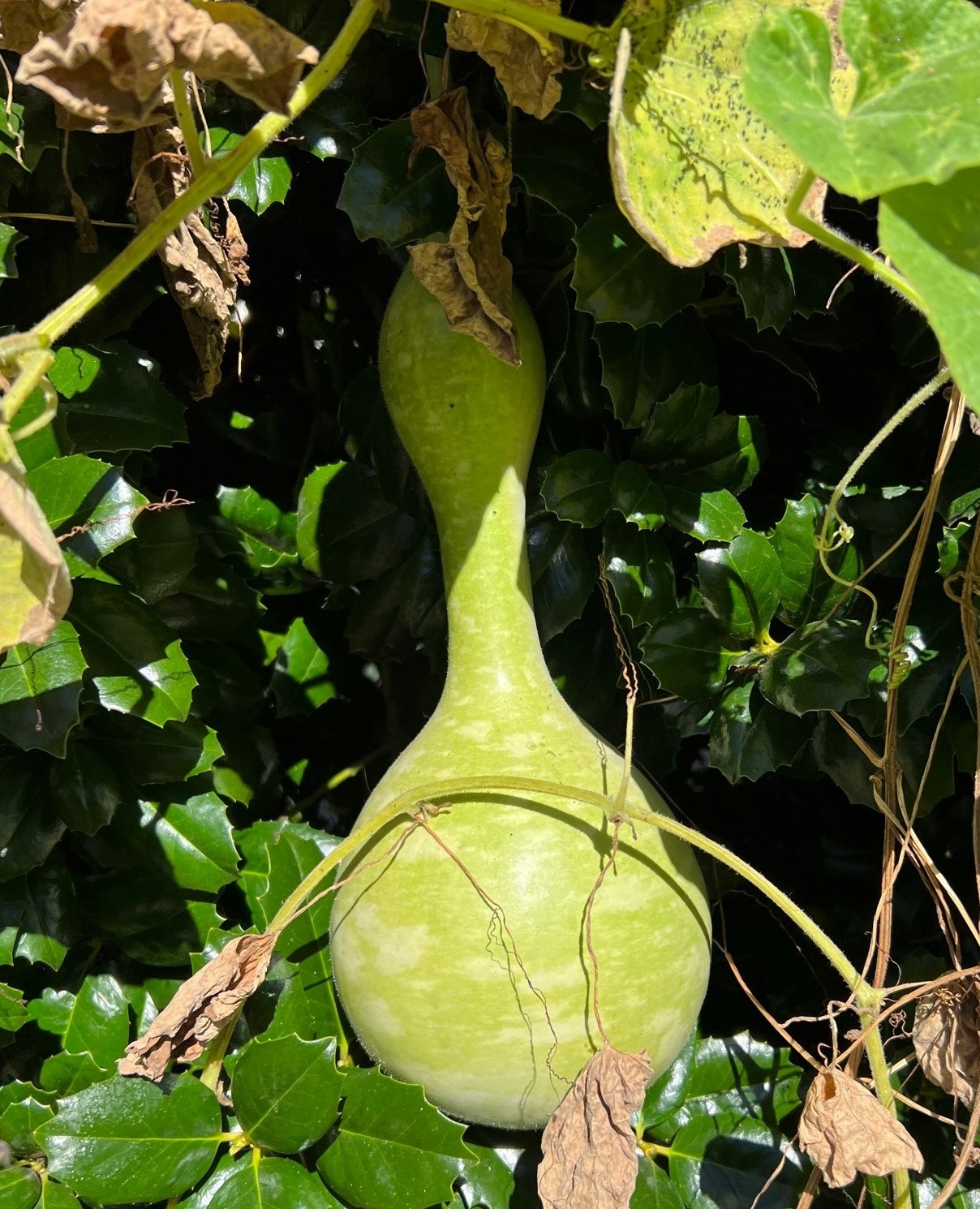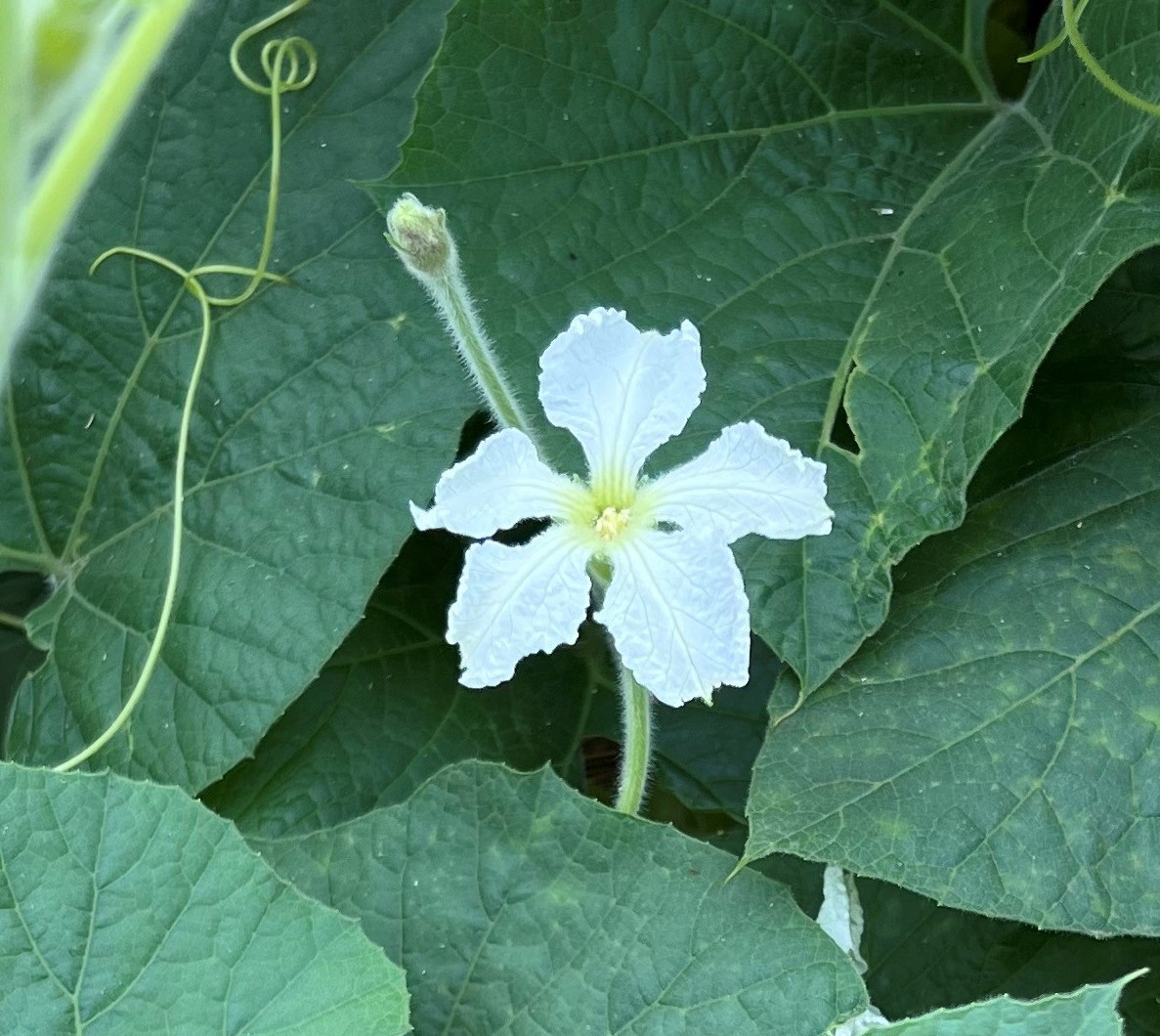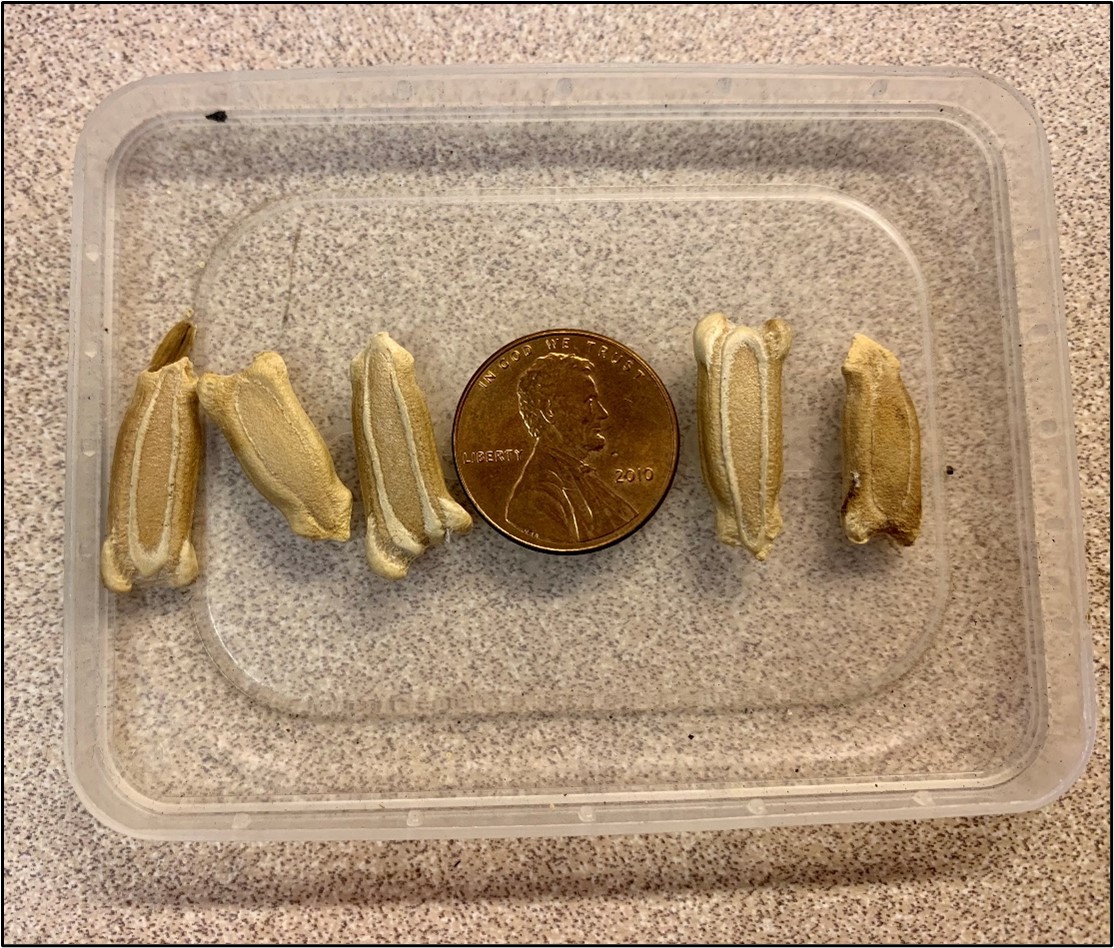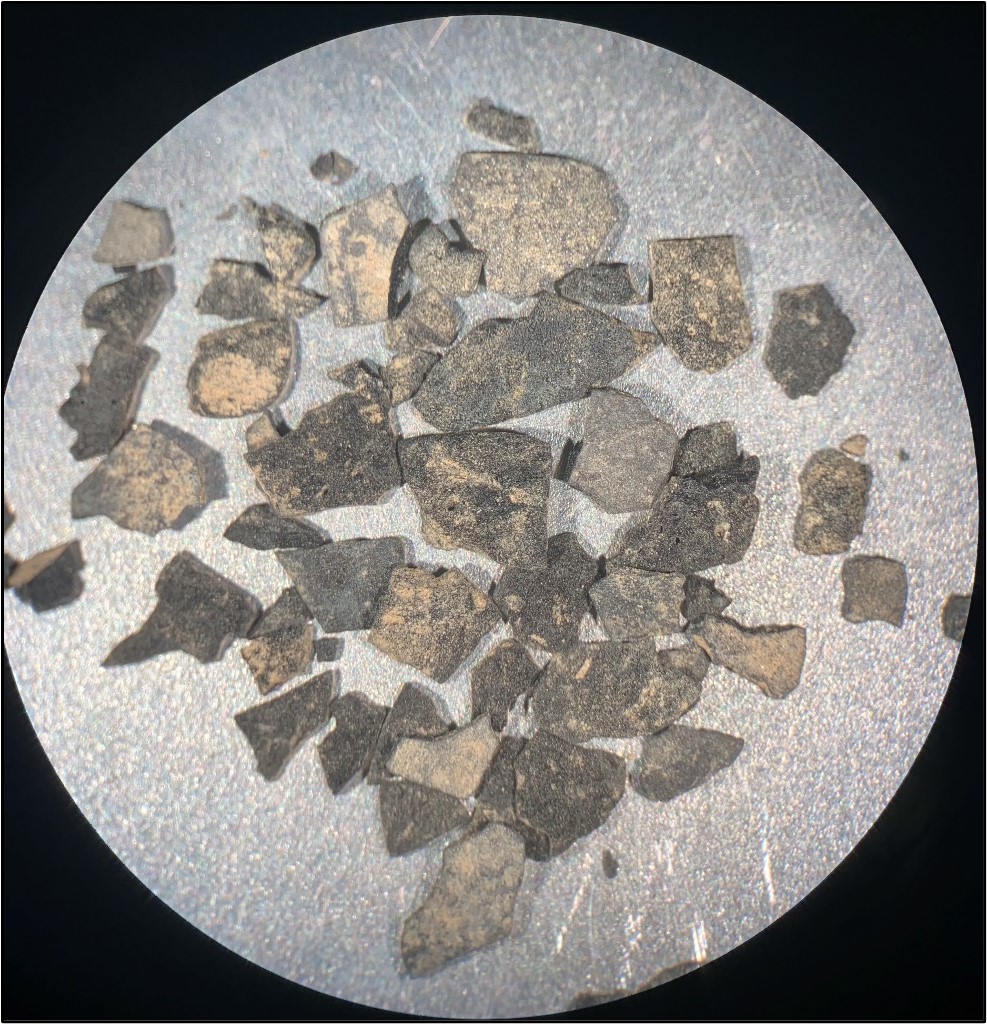Oh my gourd, it’s our October plant of the month – bottle gourd!
Pumpkins get plenty of attention this time of year, but bottle gourds are also abundant and deserve some recognition.
Do you know the history of the bottle gourd? Keep reading to find out!

Figure 1. Bottle gourd in our Southern Foodways Garden at Strong Hall (Photo by Kandi Hollenbach).
Characteristics:
The bottle gourd, Lagenaria siceraria, often referred to as calabash or the bottleneck gourd, belongs to the Cucurbitaceae/Squash family. A vining annual plant, bottle gourds require full sun, with flowers blooming in summer, and the fruits ready for harvest in the fall.
Seeds, flowers, leaves, and young stems are all edible, but the fruit should not be harvested until it has hardened.

Figure 2. Bottle gourd flower in our Southern Foodways Garden at Strong Hall (Photo by Kandi Hollenbach).
The genus name Lagenaria comes from the Greek word lagenos for “vase” because of the shapes that the fruit grows in.
The leaves of the vine are arranged alternately with serrate (toothed) margins and are simple and lobed. The flowers are typically white or yellow with four to five petals/rays fused into a cup or tube.
And the seeds are very distinctive, with their “ears” and pointed tips!

Figure 3. Photo of bottle gourd seeds with a penny for size comparison (Photo by Kelly Santana).
Historical Uses:
The fruit of the bottle gourd plant has been commonly used by many as a container, ladle, pipe, fishing-net floats, and musical instrument, in addition to eating its edible seeds.
The earliest bottle gourds appear to have made their way to the Americas by floating across the Atlantic from western Africa. When early peoples in the Americas encountered these African bottle gourds, they incorporated them into their “plant practices” and began to use them for food and utilitarian purposes by at least 10,000 years ago.
At the moment, the earliest evidence for bottle gourd in the western hemisphere is from the Little Salt Spring site in Florida, which dates to 10,015 years ago – give or take about 50 years!
Bottle gourds also made their way to the Americas by way of enslaved Africans 200-400 years ago. Peoples in the savannah complex of western Africa domesticated the bottle gourd by at least 4,000 years ago (stay tuned – as earlier sites are investigated, this date may change!) and also used them for a variety of purposes.
Via the Middle Passage, the bottle gourd again found its way to the Americas and into the gardens of enslaved Africans and colonists. The bottle gourd, also referred to as the bottleneck gourd, was a symbol for freedom among enslaved Africans on southern U.S. plantations because of its connotation with the constellation, the Big Dipper, that would guide travelers on the Underground Railroad to reach the North and freedom from enslavement.
The Cherokees have traditionally used the bottle gourd for food, as well as in the creation of ceremonial rattles, and as a dipper used for a cooking tool. They also made a poultice of soaked seeds to treat skin conditions.
The picture below shows fragments of bottle gourd rind recovered from Chota, a historical Cherokee archaeological site in Tennessee. Many other Native American tribes such as the Houma, Seminole, Ojibwa, Cocopa, Dakota, Havasupai, Hopi, Iroquois, Keres Western, Keresan, Mohave, Navajo, Navajo Ramah, Omaha, Papago, Pima, Ponca, and Yuma have also made use of the bottle gourd.

Figure 4. Archaeological bottle gourd pieces that have been carbonized from Feature 678 at the Chota Site, 40MR2 (Photo by Kelly Santana).
For More Information:
Carney, Judith A., and Richard Nicholas Rosomoff
2009 In the Shadows of Slavery: Africa’s Botanical Legacy in the Atlantic World. University of California Press. Berkley and Los Angeles, California.
Elpel, Thomas J.
1967 Botany in a Day: The Patterns Method of Plant Identification, An Herbal Field Guide to Plant Families of North America. HOPS Press. Pony, MT.
Kistler, Logan, Álvaro Montenegro, Bruce D. Smith, and Beth Shapiro
2014 Transoceanic Drift and the Domestication of African Bottle Gourds in the Americas. Proceedings of the National Academy of Sciences 111(8):2937-2941. https://www.pnas.org/doi/10.1073/pnas.1318678111#t01.
Moerman, Daniel E.
1998 Native American Ethnobotany. Timber Press, Portland, Oregon.
NCSU Extension
2022 Lageneria siceraria. Website: https://plants.ces.ncsu.edu/plants/lagenaria-siceraria/